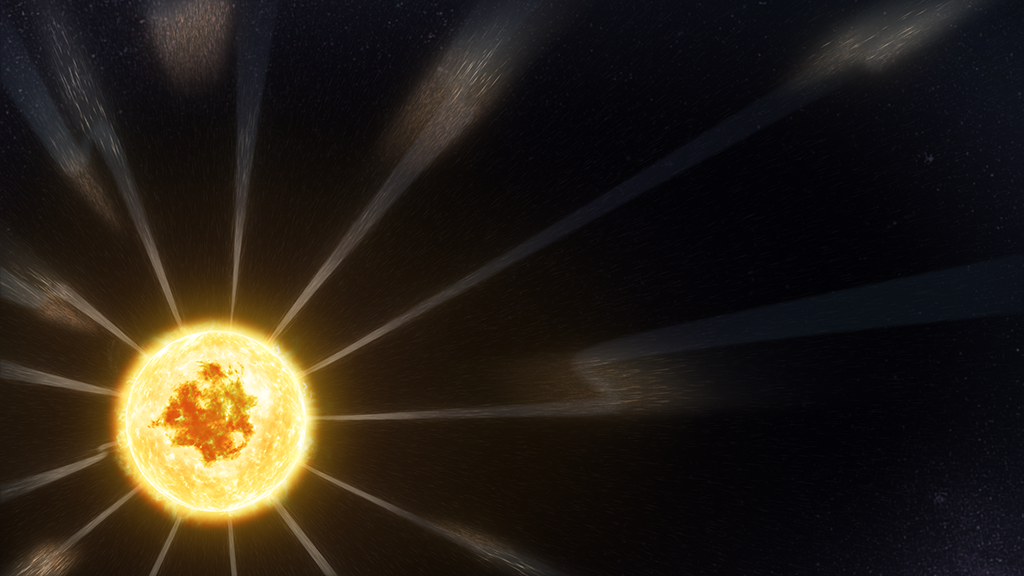Sun science rises with new trove of Parker Solar Probe studies

Solar scientists were excited that NASA would be launching a probe to fly closer to the sun than ever before, but they may not have bargained on already producing dozens of papers based on the data.
NASA's Parker Solar Probe launched in August 2018 and has since completed four close flybys of the sun. The probe will continue to study our star until 2025, creeping ever closer to the visible surface and, in turn, deeper into the solar wind, the constant outflow of highly charged plasma that stretches across the solar system.
But the mission is already producing a flood of science, with a new set of nearly 50 articles appearing in a single scientific journal. The set of papers, published as a supplement series to The Astrophysical Journal, includes some findings that have already been publicized after presentations at scientific conferences.
Related: See the sun flip out in wild new satellite view
For example, the set includes a description of Parker Solar Probe's observations of dust trailing off the asteroid Phaethon, which causes the Geminid meteor shower here on Earth. Those findings were announced in December at the fall meeting of the American Geophysical Union. (Ironically, Phaethon is named for a son of the Greek sun god, although that name was inspired by the object's close approach to the sun, not in anticipation of the solar probe's observations.)
Other papers in the collection highlight the high-resolution images that the probe's Wide-field Imager for Solar Probe, or WISPR, can capture. WISPR has observed structures in the sun's atmosphere like coronal rays and coronal mass ejections, scientists reported in the series.
Parker Solar Probe is particularly focused on studying the solar wind that pours off the sun, and that phenomenon makes plenty of appearances in the new research. Scientists studied plasma waves, switchback structures and turbulence in the solar wind, for example.
Get the Space.com Newsletter
Breaking space news, the latest updates on rocket launches, skywatching events and more!
Researchers want to better understand the sun and processes like the solar wind and coronal mass ejections because the consequences of such events, called space weather, ripple across the solar system. Around Earth, space weather can interfere with navigation, communication satellites and even the power grid during particularly serious events.
But the new papers also cover topics that are bonus science material, so to speak, less connected to Parker Solar Probe's core mission goals. One new paper analyzes the dust environment around the sun as a way of understanding the disk of so-called zodiacal dust filling our solar system.
Soon, Parker Solar Probe will have company in its close-up study of the sun: NASA and the European Space Agency are launching a mission called Solar Orbiter on Sunday (Feb. 9).
- NASA's Parker Solar Probe mission to the sun in pictures
- What's inside the sun? A star tour from the inside out
- NASA sun probe spies the solar wind in 1st birthday photo
Email Meghan Bartels at mbartels@space.com or follow her @meghanbartels. Follow us on Twitter @Spacedotcom and on Facebook.

Join our Space Forums to keep talking space on the latest missions, night sky and more! And if you have a news tip, correction or comment, let us know at: community@space.com.

Meghan is a senior writer at Space.com and has more than five years' experience as a science journalist based in New York City. She joined Space.com in July 2018, with previous writing published in outlets including Newsweek and Audubon. Meghan earned an MA in science journalism from New York University and a BA in classics from Georgetown University, and in her free time she enjoys reading and visiting museums. Follow her on Twitter at @meghanbartels.
-
rod ReplyAdmin said:Solar scientists were excited that NASA would be launching a probe to fly closer to the sun than ever before, but they may not have bargained on already producing dozens of papers based on the data.
Sun science rises with new trove of Parker Solar Probe studies : Read more
"Researchers want to better understand the sun and processes like the solar wind and coronal mass ejections because the consequences of such events, called space weather, ripple across the solar system. Around Earth, space weather can interfere with navigation, communication satellites and even the power grid during particularly serious events."
Our Sun compared to many stars examined in exoplanet studies is a very quite, and calm Sun, rotating near 2 km/s at its equator compared to other, fast rotating stars with very active flare events and likely CME events too. That is a good thing for life on Earth as well as the Sun's peak wavelength of light emitted (Wien law), yellow and optical vs. UV or X-rays.









